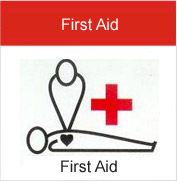World Tuberculosis Day - White Chamomile Day is organized annually on March 24.
This is not a coincidental date. On this day, March 24, 1882, the germane scientist Robert Koch made a scientific report on discovery of the disease agent - mycobacterium tuberculosis - in the Berlin physiological society. This discovery became a sensation for all medical society and made a considerable progress possible in diagnosing and treating this dangerous disease.
The memorable date is named in honor of “natural antibiotic” - a chamomile that was widely used for treatment of lung diseases and tuberculosis at that time. A chamomile became a symbol of fresh breath and healthy lungs.

On this day we want to remind that tuberculosis is a dangerous infectious (contagious) disease that emerges when disease agent - mycobacterium tuberculosis or Koch’s bacillus - enters the human body. The disease agent enters the body of the healthy person via aerosol transmission through inhalation of contaminated air. Tuberculosis can occur in any part of the body but more often it affects the lungs.
The main source of contamination is lungs tuberculosis patient who emits smallest drops of phlegm to the air containing disease agent while coughing, sneezing or talking.
There are factors that weaken the body’s defenses and contribute to the development of the disease: overwork, stress, malnutrition, chronical diseases (diabetes mellitus, peptic ulcer, etc.) especially HIV-infection.
Symptoms (signs) of tuberculosis:
Tuberculosis is curable if the disease is discovered in time and the treatment is finalized! Once started the treatment cannot be interrupted! The interruption of treatment can cause development of severe hard to cure forms of tuberculosis!
Follow simple tuberculosis prevention rules:
news archive...









